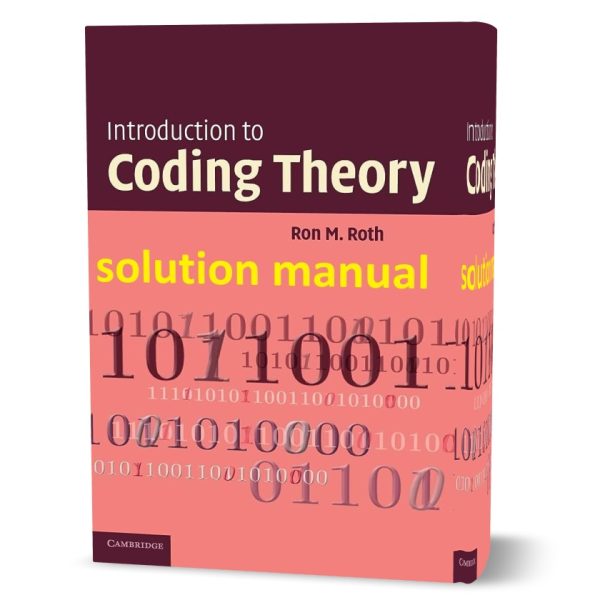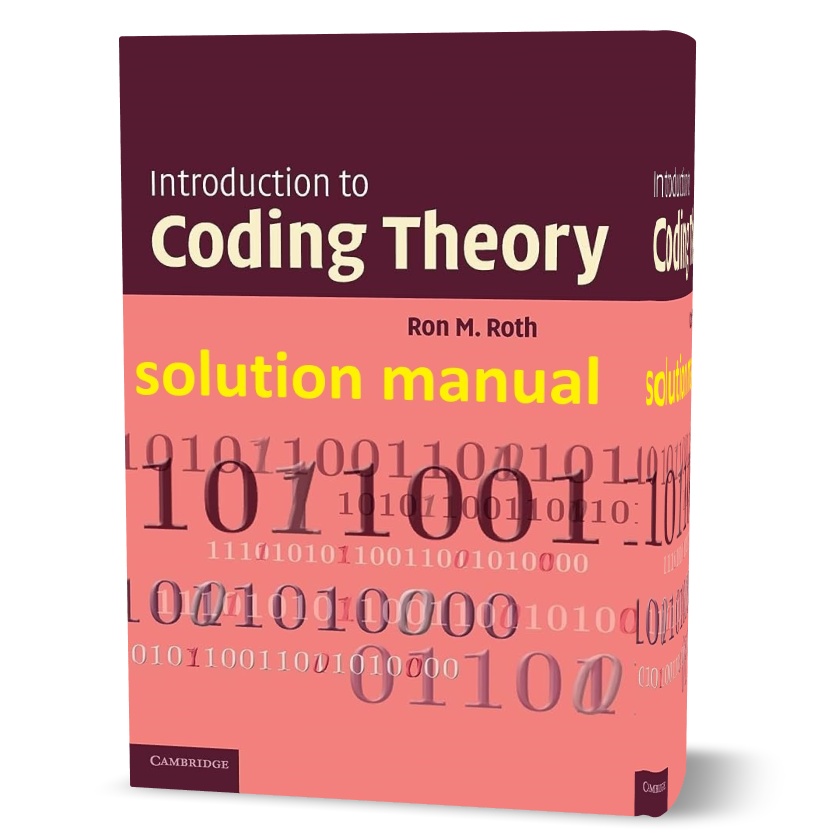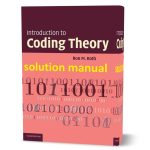introduction to coding theory Ron roth solutions manual
Original price was: $62.00.$60.00Current price is: $60.00.
Published: Cambridge University Press 2006
Edition: 1st
Pages: 492
Type: pdf
Size: 45MB
SM Content: Solution manual include answers for all chapters of textbook (chapters 1 to 14) and appendixes. There is one PDF file for each of chapters.
Solution Sample: sample file
Download After Payment
- Description
- Reviews (0)
Description
Description
This Download free introduction to coding theory Ron roth solutions manual | and all chapter answers and solution book has evolved from lecture notes that I have been using for an introductory course on coding theory in the Computer Science Department at Technion. The course deals with the basics of the theory of error-correcting codes, and is intended for students in the graduate and upper-undergraduate levels from Computer Science, Electrical Engineering, and Mathematics. The material of this course is covered by the first eight chapters of this book, excluding Sections 4.4–4.7 and 6.7. Prior knowledge in probability, linear algebra, modern algebra, and discrete mathematics is assumed. for download solutions manual click here.
introduction to coding theory Ron roth solutions manual
On Download free introduction to coding theory Ron roth solutions manual | and all chapter answers and solution the other hand, all the required material on finite fields is an integral part of the course. The remaining parts of this book can form the basis of a second, advanced-level course. There are many textbooks on the subject of error-correcting codes, some of which are listed next: Berlekamp [36], Blahut [46], Blake and Mullin [49], Lin and Costello [230], Mac Williams and Sloane [249], Mc Eliece [259], Peterson and Weldon [278], and Pless [280]. These are excellent sources, which served as very useful references when compiling this book. The two volumes of the Handbook of Coding Theory [281] form an extensive encyclopedic collection of what is known in the area of coding theory. One feature that probably distinguishes this book from most other classical textbooks on coding theory is that generalized Reed–Solomon (GRS) codes are treated before BCH codes—and even before cyclic codes.
The purpose of this was to bring the reader to see, as early as possible, families of codes that cover a wide range of minimum distances. In fact, the cyclic properties of (conventional) Reed–Solomon codes are immaterial for their distance properties and may only obscure the underlying principles of the decoding algorithms of these codes. Furthermore, bit-error-correcting codes, such as binary BCH codes, are found primarily in spatial communication applications, while readers are now increasingly exposed to temporal com munication platforms, such as magnetic and optical storage media. And in those applications—including domestic CD and DVD—the use of GRS codes prevails.
the treatment of finite fields in this book is split
Therefore, where the first batch of properties (in Chapter 3) is aimed at laying the basic background on finite fields that is sufficient to define GRS codes and understand their decoding algorithm. A second batch of properties of finite fields is provided in Chapter 7, prior to discussing cyclic codes, and only then is the reader presented with the notions of minimal polynomials and cyclotomic cosets.
Combinatorial bounds on the parameters of codes are treated mainly in Chapter 4. In an introductory course, it would suffice to include only the Singleton and sphere-packing bounds (and possibly the non-asymptotic version of the Gilbert–Varshamov bound).
The remaining parts of this chapter contain the asymptotic versions of the combinatorial bounds, yet also cover the information-theoretic bounds, namely, the Shannon Coding Theorem and Converse Coding Theorem for the q-ary symmetric channel. The latter topics may be deferred to an advanced-level course.




Reviews
There are no reviews yet.